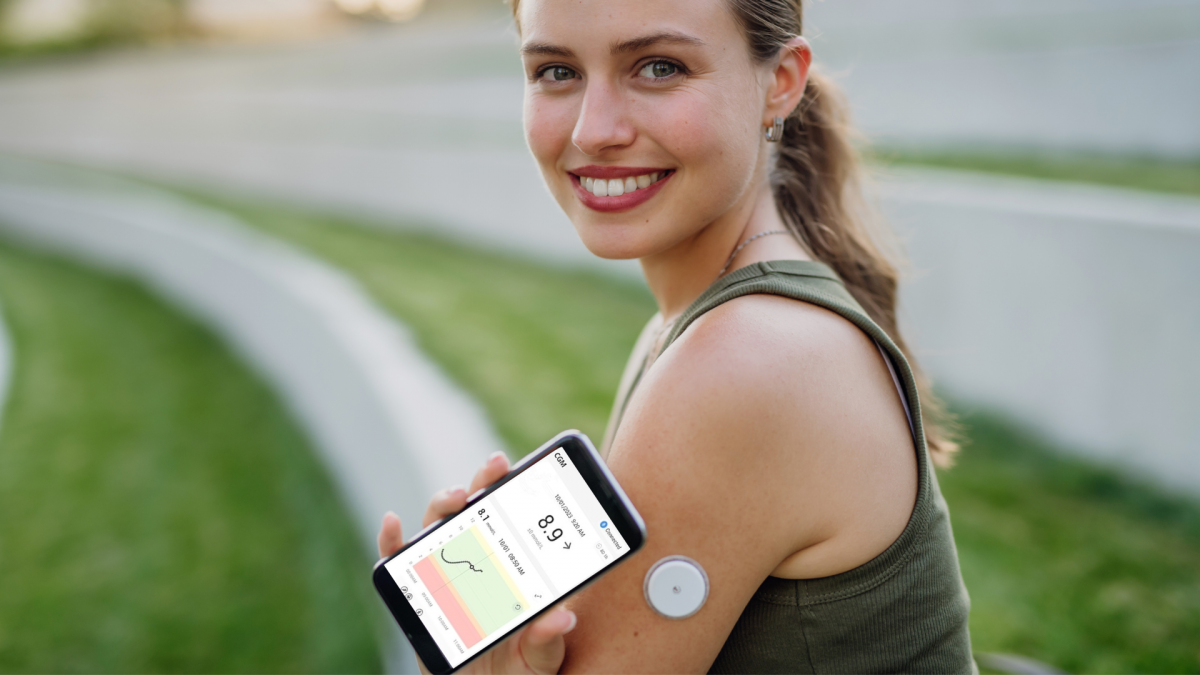Continuous Glucose Monitoring (CGM) is a transformative technology in diabetes management, offering real-time insights into glucose levels. Unlike traditional methods that require finger pricks and test strips, CGM systems continuously track glucose levels throughout the day and night. This constant monitoring helps individuals with diabetes maintain better control over their blood glucose levels, reducing the risk of both short- and long-term complications.
How Continuous Glucose Monitoring (CGM) Works
A CGM system typically consists of a small sensor inserted under the skin, often on the abdomen or arm. The sensor measures glucose levels in the interstitial fluid—the fluid surrounding the cells—every few minutes. This data is then transmitted to a receiver or smartphone app, where the user can view their glucose levels in real-time.
In addition to providing current glucose readings, CGM systems also display trends and patterns, alerting users when their glucose levels are too high or too low. Some advanced CGM systems can even communicate with insulin pumps, automatically adjusting insulin delivery based on glucose readings .
Benefits of Continuous Glucose Monitoring (CGM)
- Improved Glycemic Control: Continuous monitoring allows for more precise adjustments to insulin doses, leading to improved glycemic control and reducing HbA1c levels over time.
- Early Detection of Hypoglycemia: CGM systems can alert users to impending hypoglycemia before symptoms appear, allowing for quick intervention and prevention of severe episodes.
- Data-Driven Decision Making: With detailed glucose trends, users can make informed decisions about diet, exercise, and insulin management .
- Reduced Finger Pricks: While some CGM systems may still require occasional calibration, most significantly reduce the need for frequent finger pricks .
Who Can Benefit from Continuous Glucose Monitoring (CGM)?
CGM is beneficial for various groups, including:
- Type 1 Diabetes Patients: Particularly those prone to hypoglycemia or those who experience difficulty maintaining stable glucose levels.
- Type 2 Diabetes Patients: Especially those on insulin therapy or struggling with glycemic control.
- Children with Diabetes: Providing parents and caregivers with peace of mind by monitoring glucose levels in real-time.
Challenges and Considerations
While CGM offers many advantages, there are some challenges to consider:
- Cost: CGM systems can be expensive, and not all insurance plans cover the full cost.
- Calibration: Some systems require calibration with finger-stick tests, although newer models are becoming increasingly user-friendly.
- Accuracy: Although generally reliable, CGM sensors may occasionally produce inaccurate readings, particularly during rapid glucose level changes.
The Future of CGM
As technology continues to advance, CGM systems are expected to become more accurate, accessible, and integrated with other diabetes management tools. Research is ongoing into closed-loop systems, which combine CGM with insulin pumps to create an "artificial pancreas" that automatically regulates blood glucose levels with minimal user input.
Sinocare iCan i3 CGM (Continuous Glucose Monitoring) from Sinocare is a device used for continuous blood glucose monitoring. Below are some important details regarding this product:
Design and Function:
- Sinocare iCan i3 CGM (Continuous Glucose Monitoring) is a glucose monitoring tool that eliminates the need for frequent finger pricks by using a sensor attached to the body to continuously measure glucose levels in real-time.
Sinocare iCan i3 CGM (Continuous Glucose Monitoring) is primarily used by individuals with diabetes to continuously monitor their glucose levels, which is crucial for managing the condition effectively.
In conclusion, Continuous Glucose Monitoring represents a significant advancement in diabetes care, providing real-time data that empowers users to take control of their health. As CGM technology continues to evolve, it has the potential to further improve the quality of life for those living with diabetes.
References
- American Diabetes Association. (2021). Continuous Glucose Monitoring: An Overview. Diabetes Care Journal.
- Mayo Clinic. (2022). Continuous Glucose Monitoring: Benefits and How It Works.
- Peters, A., & Laffel, L. (2020). Diabetes Technology and Therapy: Advances in Continuous Glucose Monitoring. Journal of Diabetes Science and Technology.
- Battelino, T., et al. (2019). Clinical Targets for Continuous Glucose Monitoring Data Interpretation: Recommendations from the International Consensus on Time in Range. Diabetes Care Journal.
- Dexcom. (2022). Understanding Continuous Glucose Monitoring.






